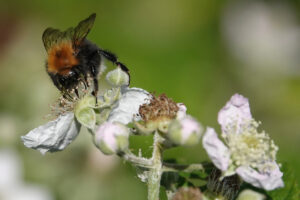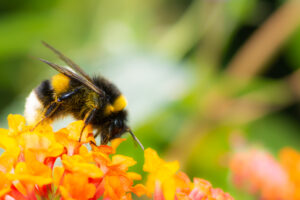How Can We Help?
Since the bad weather my bumble bee infestation has disappeared?
Since the bad weather, my bumble bee infestation has disappeared?
Are bumblebees not as active in the rain?
This all comes down to the time of year. Suppose it’s the depth of the winter, and you’re unlucky enough to have a highly unlikely bumblebee nest. In that case, the bad weather and cold can kill the nest.
Bumble Bee
Now, if you’re talking about early spring. We have had a little bit of a warm spell, then all of the sudden, average UK weather we have a couple of days, or if we’re unlucky weeks of rain, then no, the bumblebees will still be there. But, typically, the temperature in the shower may drop, causing the bumblebees to stay inside their nests until they have to forage for food.
weather we have a couple of days, or if we’re unlucky weeks of rain, then no, the bumblebees will still be there. But, typically, the temperature in the shower may drop, causing the bumblebees to stay inside their nests until they have to forage for food.
A bumblebees life cycle
In early spring, when the temperatures warm up, the Queen wakes up from hibernation. She usually has been asleep under the ground using her reserves of fat that she Cycles into energy, helping her Haber deep sleep.
When she first emerges from her hibernation, she tends to feed on flowers taking in as much nectar as she possibly can. Once she has provided and restarted her energy, she will start looking for a nesting site. This could be a bird box, a hole in the ground where she feels comfortable and safe to make her nest.
Nesting sites
Once she has found the perfect nesting site, the Queen gathers pollen for her nest. She then creates man’s off wax and pollen and then lays her first brood of eggs. The Queen keeps the eggs warm by sitting on them, shivering her body, which provides heat for The eggs.
The larvae typically take around two weeks to develop into a cocoon. After that, they develop into adult bees.
Early summer
The first lot of eggs have developed and hatched. They are all females. Some will work inside the nest. Someone work outside the nest, gathering pollen and nectar. Some even guard the nest. From this point, the sole job of the Queen bumblebee is to lay eggs.
Late summer
 Late in the summer months, the Queen bumblebee starts to lay male eggs to sustain the Colony. Also, she will produce new queen bumblebees. The male bee is once hatched from the eggs, generally never return to the Colony. Instead, they will feed on pollen and nectar whilst looking to meet with Queen’s from other bumblebee colonies.
Late in the summer months, the Queen bumblebee starts to lay male eggs to sustain the Colony. Also, she will produce new queen bumblebees. The male bee is once hatched from the eggs, generally never return to the Colony. Instead, they will feed on pollen and nectar whilst looking to meet with Queen’s from other bumblebee colonies.
New queen bumblebees mate once they have left the Colony. After mating, they will feed on pollen and nectar in ready for the winter hibernation. Unfortunately, Queen’s only survive through one winter.
If you’re unsure whether you have a bumble bees nest, you can always give us a call.
